Timeless Play
By: Kye Li Chia, Ruoxi Song, Mansi Chottani


Background
Design Statement:
With convenient technologies and rapid urbanisation becoming increasingly prominent forces in society, we're witnessing a gradual disappearance of traditional practices that once fostered a strong sense of community and togetherness. This project aimed to combat this trend by reviving and reintroducing these lost traditions. Through our design intervention, we sought to bridge the gap between generations and ensure the cultural significance of these practices is not forgotten. Ultimately, this project contributes to the preservation of cultural heritage and fosters a renewed sense of community, reminding us of the importance of traditions in connecting us to our past and enriching our present.
Research Question:
How can we preserve traditions through games?
Research Statement:
Design a way to preserve traditions through games by bringing traditional childhood games into public spaces.
Research Methods:
Literature Review, Survey, Physical Exploration, Mind Map, Directed Storytelling, User Testing, Workshop, Prototyping
My Responsibilities:
I was deeply involved throughout the entire design process for this project, from initial research to final design execution. This included conducting user research, facilitating workshops, and even creating the project's branding and visual elements like prints.
Research
Literature Review:
Through research papers, it is founded that physical outdoor games have many benefits to children:
Agility
Games which involves running, jumping, and throwing.Problem Solving
Games that require strategising in teams or individually.
Communiction
Games are passed on through oral, sound, or presentations.Social Behaviour
Learning responsibility and showing sensitivity towards others.Survey:
Surveyed 21 participants from diverse backgrounds to assess interest in traditional games amidst the digital era. Results indicate:
Materials and Games Exploration:
Traditional childhood games often required improvised versions, using materials found in the surroundings. We visited a park and recreated several of these games using materials we found.
Research Analysis
Prototype
Prototype
We crafted infographics guiding the public on playing childhood games using park materials. Featuring games from diverse countries, our aim is to foster cultural exchange and tradition sharing.




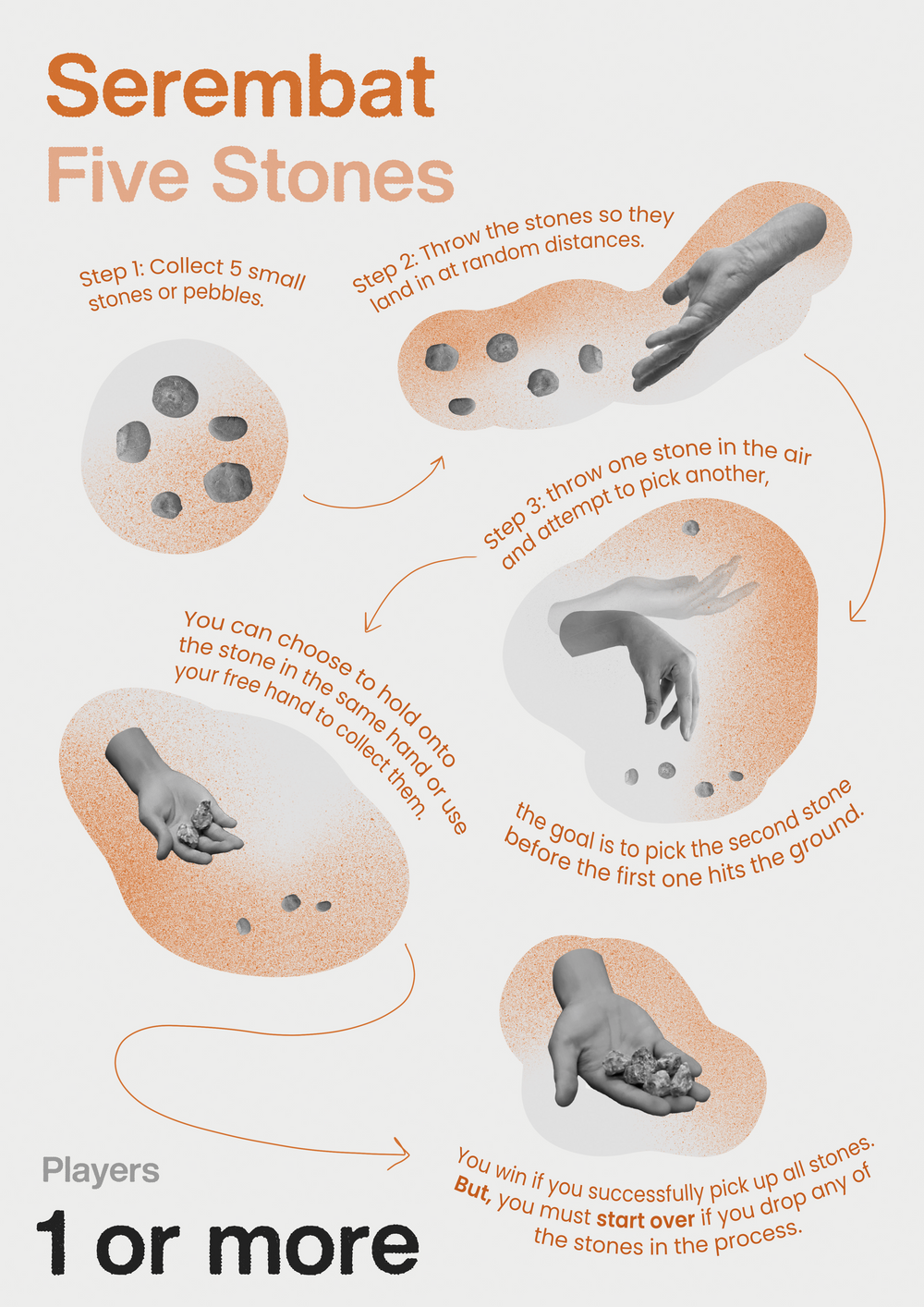
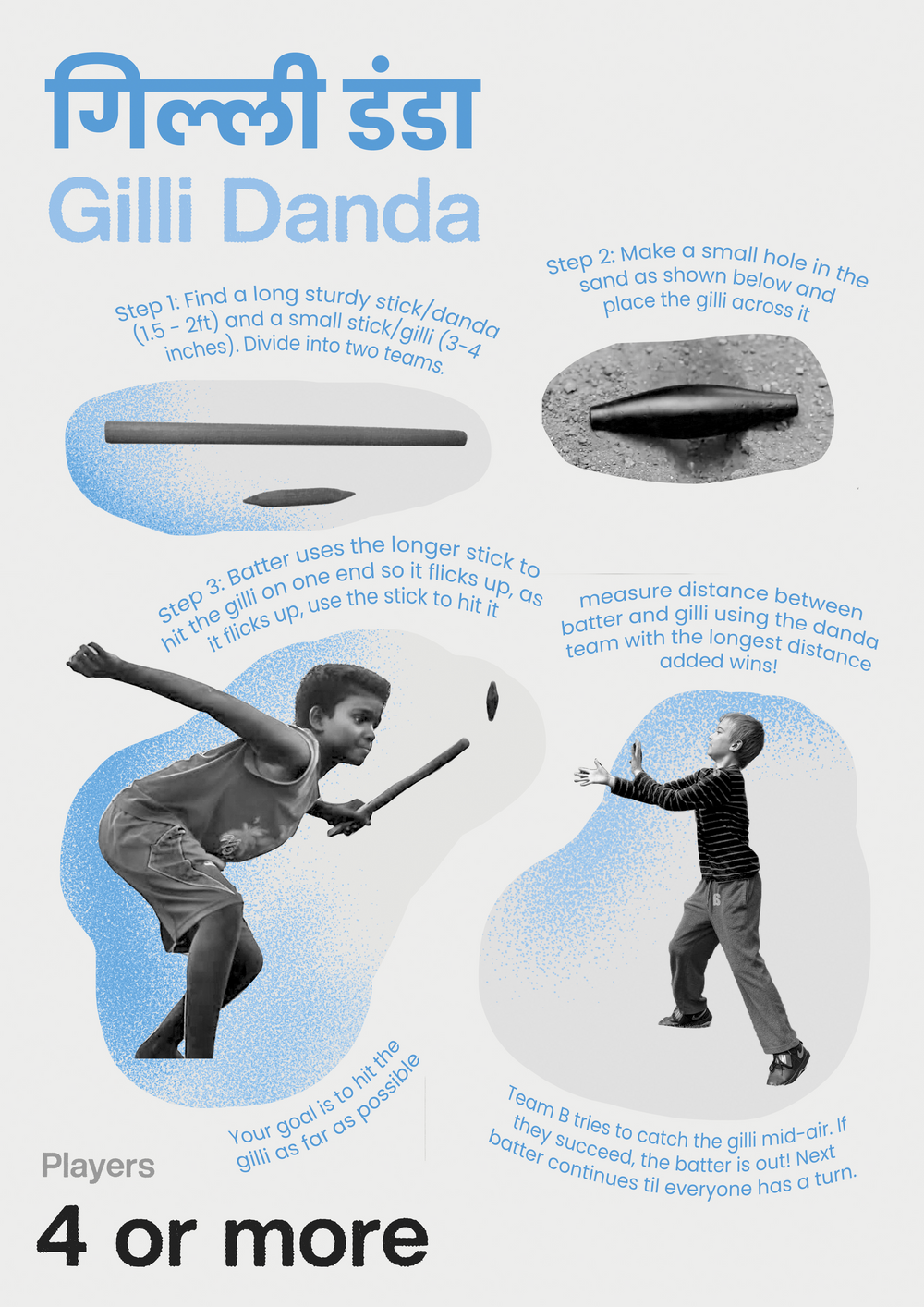


User Testing & Workshop (London Design Festival)



Given our project's focus on preserving tradition through games, we designed a workshop to explore public perspectives on tradition. To facilitate this, we designed a simple zine template featuring the following questions:
- What does the world 'Tradition' mean to you?
- List traditions that are most memorable/valuable to you (personal/cultural)
- How would you want to revive/bring back the lost or declining tradition?
Our workshop was structured in a way that after the attendees completed each prompt, we encouraged them to discuss what they had drawn or written in their zines, aiming to initiate a group conversation.


Participants crafting and explaining their ‘Timeless Tradition’ zine.
Challenges:
![]() Missing infographic
Missing infographic
![]() Dismantled standee
Dismantled standee
![]() Incorrect standee size
Incorrect standee size
![]() Lack public interaction
Lack public interaction
Learnings:
![]() Work and communicate with external collaborators
Work and communicate with external collaborators
![]() Source suitable materials to display the infographics
Source suitable materials to display the infographics
![]() Plan an immersive exhibition in a regulated public area
Plan an immersive exhibition in a regulated public area
![]() Plan and facilitate an interactive workshop with members of the public
Plan and facilitate an interactive workshop with members of the public
Challenges:




Learnings:

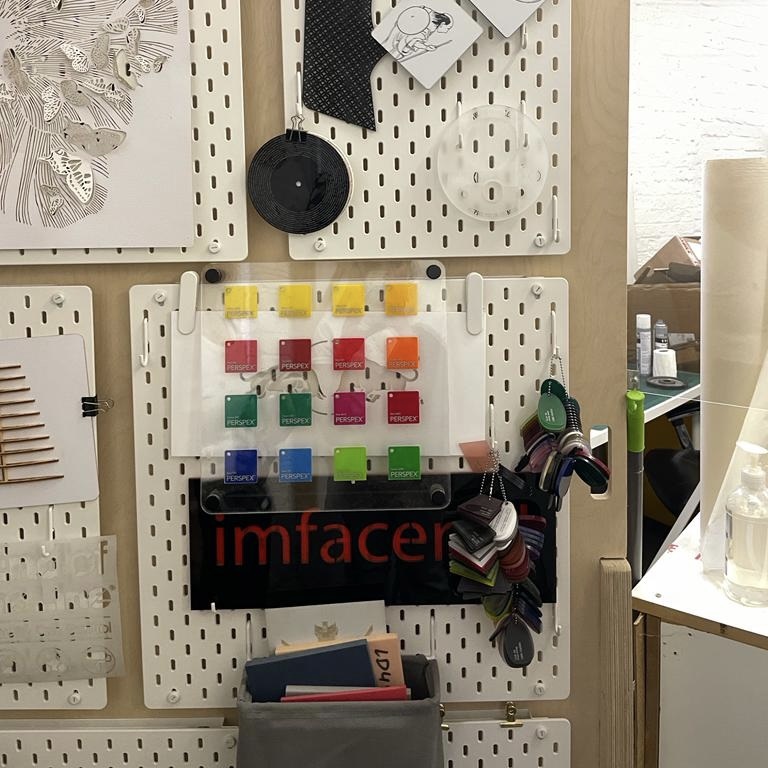
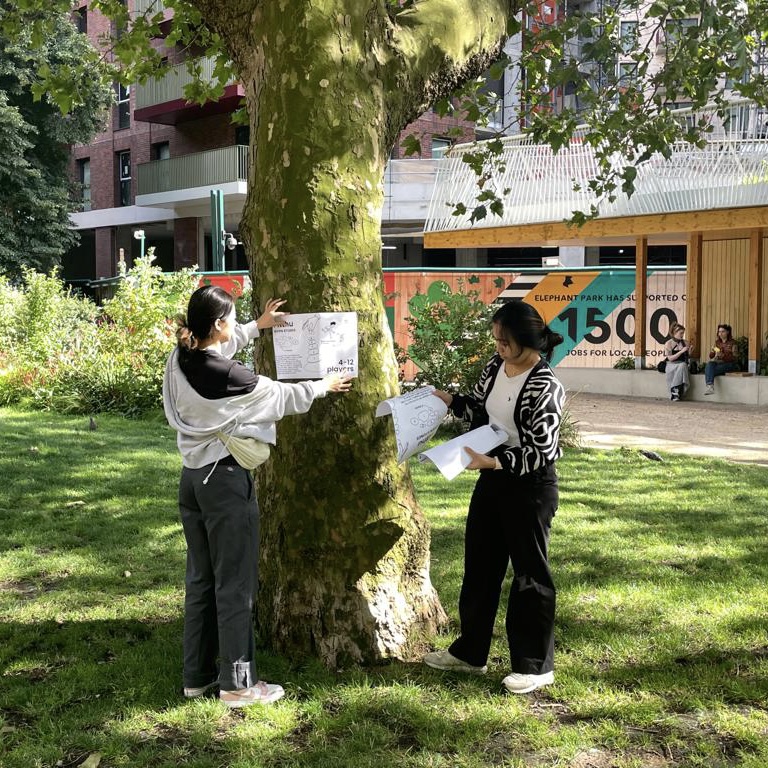

Research Analysis
After concluding our London Design Festival exhibition and workshop, we held a debrief to discuss our feedback.


To delve deeper into the concept of 'tradition,' we created mind maps capturing insights and challenges from the workshop. This documentation encapsulates our thoughts and lessons on the topic.



Research
Directed Storytelling:
We employed the directed storytelling research method to investigate the value of preserving traditional games amid their diminishing popularity. Participants from diverse nationalities, such as Chinese, Malaysian, Indian, and Slovakian, actively contributed to the research.


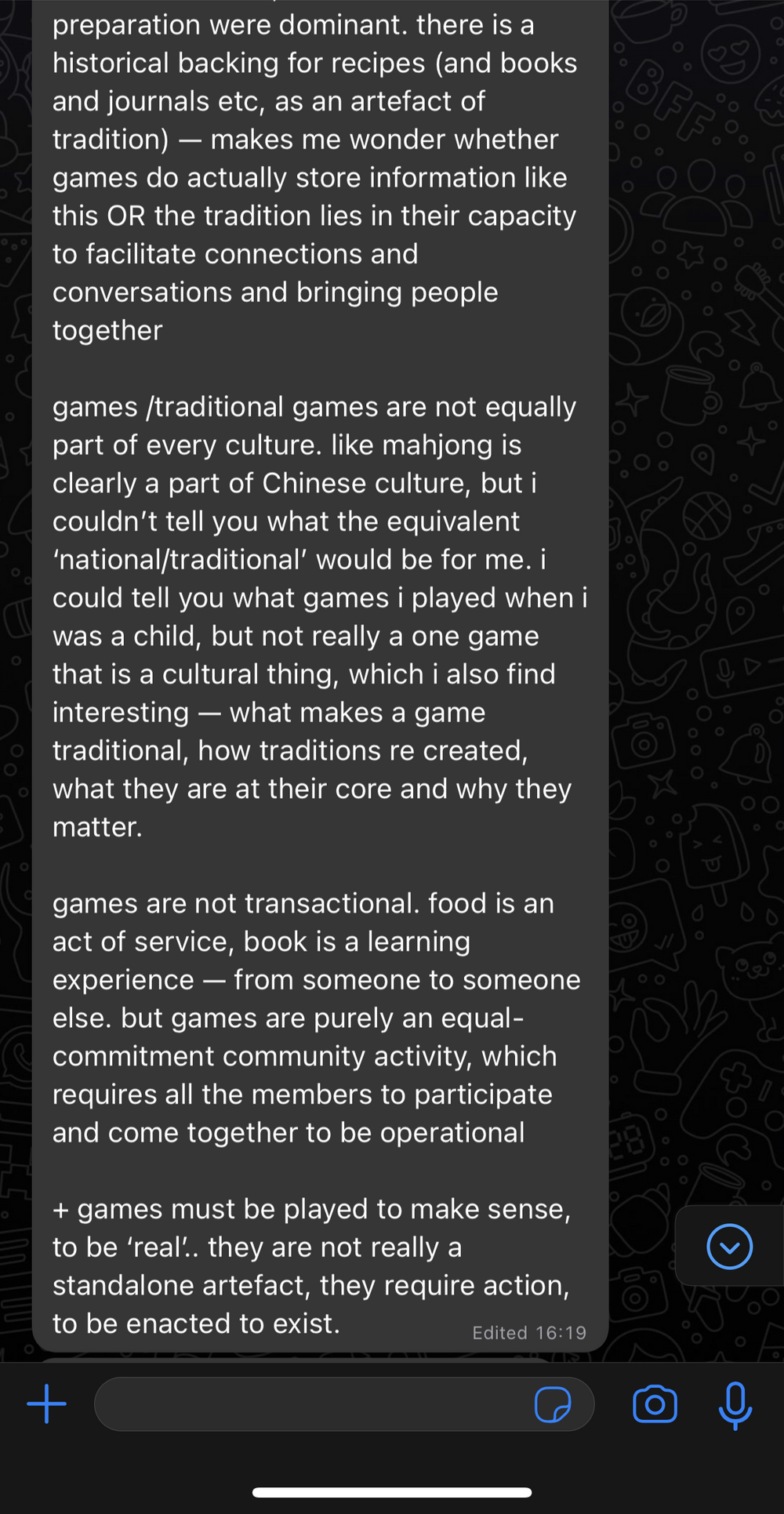
A deeper analysis revealed that traditional childhood games convey more than cultural connections—they contain information about climate, architecture, seasons, resources, and more.
Design Process
The Paji origami instructions underwent a design and testing phase, involving others to assess their grasp of the folding process. Concurrently, tests were conducted to guarantee the effective functionality of Paji in actual gameplay, ensuring it met the minimum weight requirement.

Inforgraphics:
The infographics were restructured and refined based on feedback from testing participants. In collaboration with individuals unfamiliar with the games, we adapted the step-by-step instructions according to the natural phrases they used to describe the games to someone else.




Branding:
Our exploration into color began with a focus on hues prevalent in our cultural heritage (China, Malaysia, India). Adding complementary tones, we aimed to enhance vibrancy and create an eye-catching visual appeal. Numerous rounds of test prints were conducted to achieve the perfect color shades for the project.


To enhance our branding, we decided to craft game-specific characters using materials similar to those used in the games. These characters will feature prominently on each Paji, aiding easy identification and differentiation.






Final Product
Clear instructions with visuals were provided for easy understanding of the gameplay. QR codes were added to provide video explanations, catering to those who prefer visual learning.






Traditional games infographics.
The infographics can be folded into Paji(s), a traditional Chinese game. Together, they form a portable collection, facilitating easy dissemination.

Paji Templates:
The template includes guidelines for individuals to craft their own games, serving as an invitation to share and preserve games from diverse traditions.


Paji template.
Established an online presence on Instagram to foster cultural exchange and play through traditional games.
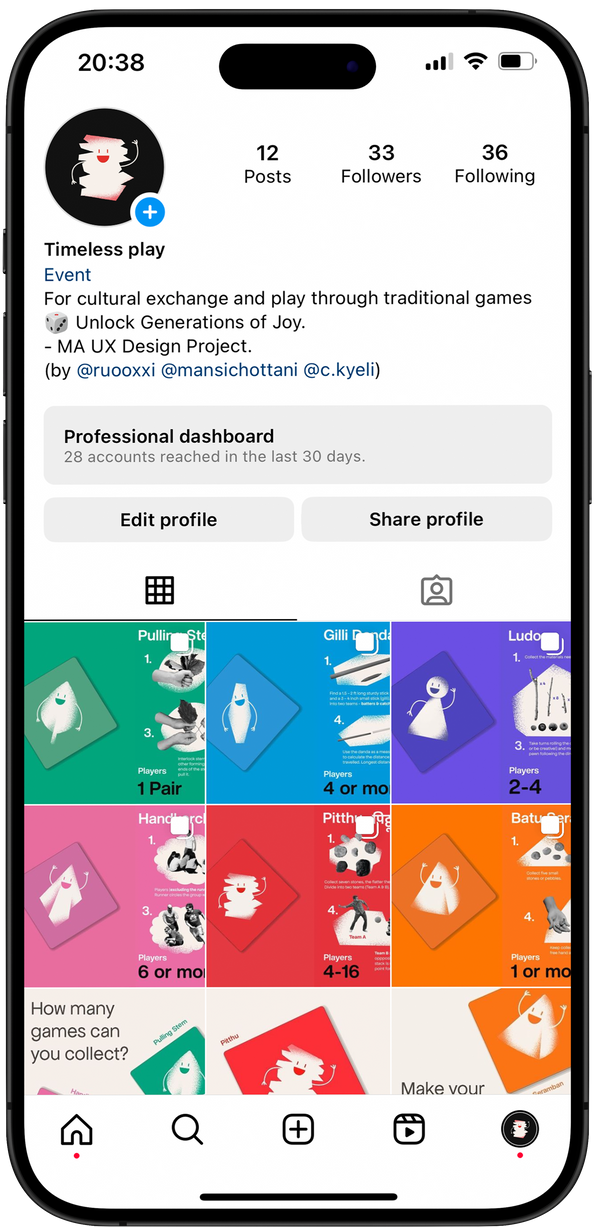
Posters:
To promote the festival, we crafted attention-grabbing posters to captivate the public and spread the word about the event.

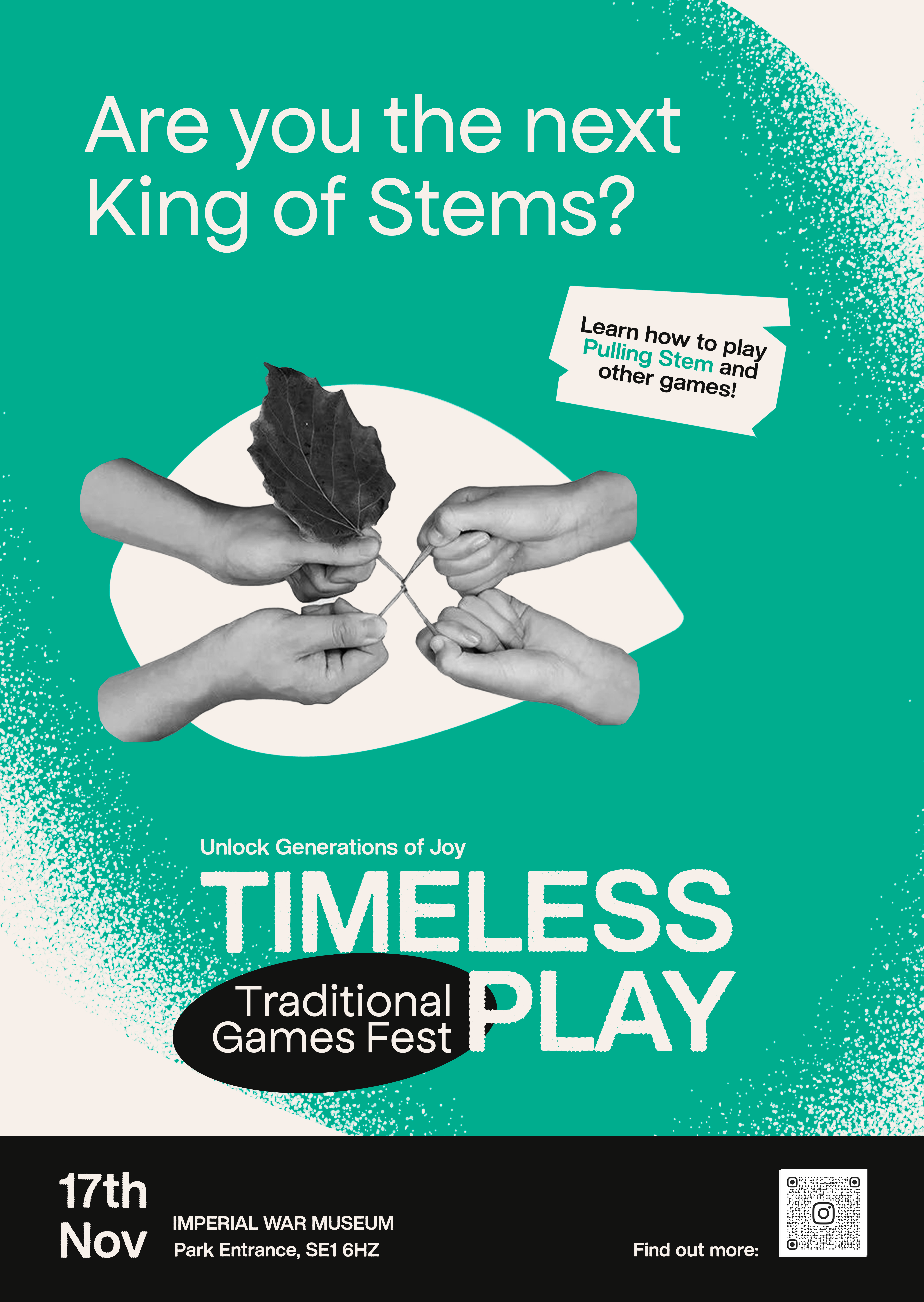
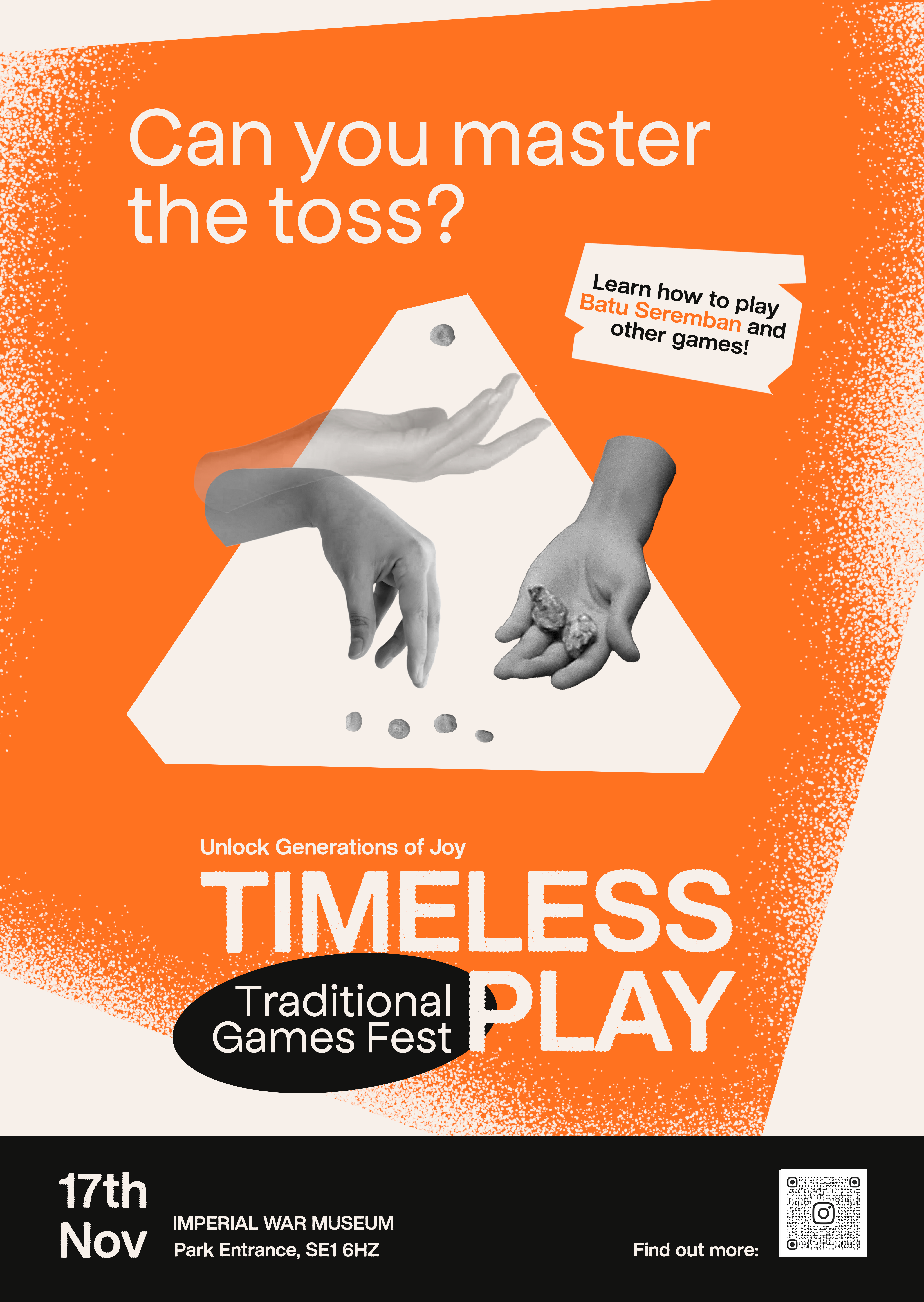
‘Timeless Play’ Booklet:
The booklet serves as a comprehensive guide for hosting a traditional games fest, featuring infographics, Paji templates and gameplay, and event hosting guidelines. It is downloadable and shareable, ensuring widespread accessibility.
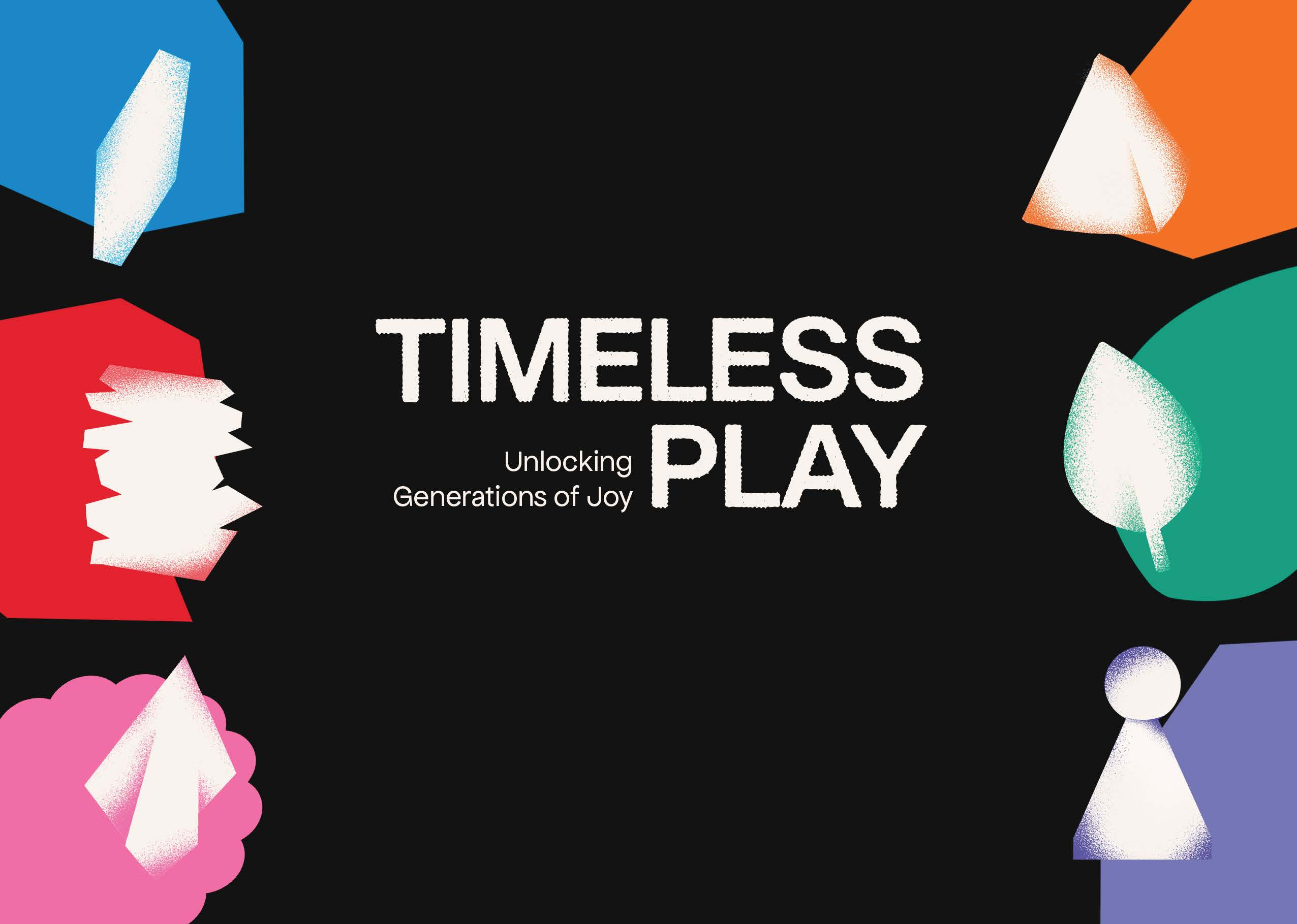
















Hosting the ‘Timeless Play’ Fest
We organised our traditional games festival across two days, on November 16th and 17th, held at Geraldine Mary Harmsworth Park. We obtained many insightful observations and valuable feedback from the fest which would help us improve our designs and how we document our traditional games fest.
‘Timeless Play’ Fest Reflection
We recognise a flaw in our project's documentation, particularly in capturing little details that could have significantly enriched our understanding. While our primary focus was on encouraging public engagement in traditional games, we regret not capturing subtler interactions like facial expressions, comments, and body language, which could have provided valuable insights. Obtaining participant consent for filming posed a challenge, resulting in a lack of initial spontaneous reactions from festival attendees.
Moreover, our intense focus on facilitating public interaction with the fest led us to overlook preparing follow-up questions about the value of preserving traditions. In future endeavors, we aim to be better prepared, ensuring comprehensive planning and readiness to address such aspects.
Bibliography
Bibliography
Balci, S., & Ahi, B. (2017). Mind the gap! Differences between parents’ childhood games and their children’s game preferences. Contemporary Issues in Early Childhood, 18(4), 434–442. https://doi.org/10.1177/146394911774278
Sulistyaningtyas, R.E. and Fauziah, P.Y. (2019) The implementation of traditional games for early childhood education, The Implementation of Traditional Games for Early Childhood Education | Atlantis Press. Available at: https://www.atlantis-press.com/proceedings/iccie-18/125910410 (Accessed: 04 July 2023).
Skitnevskiy, V.L., Krasilnikova, Y.S., Grigoryeva, E.L., Sedov, I.A., Balashova, V.F. and Smirnov, S.А., 2020. Developing agility through physical gaming activity with adolescent kids during lessons of physical training. Universidad y Sociedad, 12(4), pp.38-44.
Sulistyaningtyas, R.E. and Fauziah, P.Y. (2019) The implementation of traditional games for early childhood education, The Implementation of Traditional Games for Early Childhood Education | Atlantis Press. Available at: https://www.atlantis-press.com/proceedings/iccie-18/125910410 (Accessed: 04 July 2023).
Skitnevskiy, V.L., Krasilnikova, Y.S., Grigoryeva, E.L., Sedov, I.A., Balashova, V.F. and Smirnov, S.А., 2020. Developing agility through physical gaming activity with adolescent kids during lessons of physical training. Universidad y Sociedad, 12(4), pp.38-44.